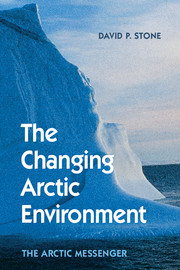Book contents
- Frontmatter
- Dedication
- Contents
- Acknowledgements
- Acronyms
- 1 Personal Beginnings
- PART I THE CHANGING ARCTIC
- PART II WORKING TOGETHER
- PART III WHAT IS THE PRESENT STATE OF KNOWLEDGE?
- PART IV WHAT DOES ALL THIS MEAN?
- Appendix I The Intergovernmental Panel on Climate Change (IPCC)
- Appendix II What Will Happen in the Future If We Do Nothing or If We Try Very Hard to Aggressively Reduce GHG Emissions: Projected Change Under Different Emission Scenarios
- Appendix III Some Geophysical Background Notes Related to Climate and Weather
- Appendix IV Orbital Forcing
- Appendix V The Concept of Commitment
- Bibliography
- Credits
- Index
Appendix V - The Concept of Commitment
Published online by Cambridge University Press: 05 February 2015
- Frontmatter
- Dedication
- Contents
- Acknowledgements
- Acronyms
- 1 Personal Beginnings
- PART I THE CHANGING ARCTIC
- PART II WORKING TOGETHER
- PART III WHAT IS THE PRESENT STATE OF KNOWLEDGE?
- PART IV WHAT DOES ALL THIS MEAN?
- Appendix I The Intergovernmental Panel on Climate Change (IPCC)
- Appendix II What Will Happen in the Future If We Do Nothing or If We Try Very Hard to Aggressively Reduce GHG Emissions: Projected Change Under Different Emission Scenarios
- Appendix III Some Geophysical Background Notes Related to Climate and Weather
- Appendix IV Orbital Forcing
- Appendix V The Concept of Commitment
- Bibliography
- Credits
- Index
Summary
Climate scientists are confident that warming and sea level change will continue for centuries because of their knowledge of the carbon cycle in the case of carbon dioxide and of the lifetime of other Green House Gases (GHGs) in the atmosphere. For example, the lifetimes for methane and hydrochlorofluorocarbon-22 (as a representative of these types of chemicals) is about 12 years and for nitrous oxide about 110 years. The concentration of any GHG in the atmosphere depends on how much of the gas is being added to the atmosphere in comparison to how much is being removed. Therefore, for these substances (excluding carbon dioxide), it is not difficult to calculate the atmospheric concentration that would result from a reduction in the emissions of the gas. Stabilization and even a return to preindustrial levels (if emissions are eliminated) are possible within decades or a few centuries for substances with a short atmospheric lifetime.
However, this is not the case with carbon dioxide, for which an atmospheric lifetime cannot be calculated. Unfortunately, carbon dioxide is by far the most important GHG. Until the age of industrialisation, the concentration of carbon dioxide in the atmosphere was maintained over the long term at a roughly constant level (approximately 280 ppm) through the carbon cycle, which involves gas exchange between the atmosphere, the ocean and the lithosphere and which is made up of slow and fast components. At present, the oceans are absorbing much of the “excess” carbon dioxide we are adding to the atmosphere – but not all. About 20% will remain in the atmosphere for many millennia.
What about that 375 billion tonnes of carbon that humankind has injected into the atmosphere through our CO2 emissions since the beginning of the Industrial Revolution? The oceans are a very significant component of the carbon cycle. In fact, the oceans are thought to have already absorbed about 48% of the carbon emitted to the atmosphere from anthropogenic sources between 1800 and 1994. However, carbon dioxide absorption by the oceans is a slow process.
- Type
- Chapter
- Information
- The Changing Arctic EnvironmentThe Arctic Messenger, pp. 320 - 322Publisher: Cambridge University PressPrint publication year: 2015



